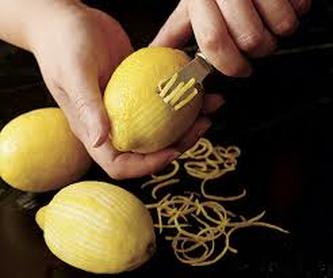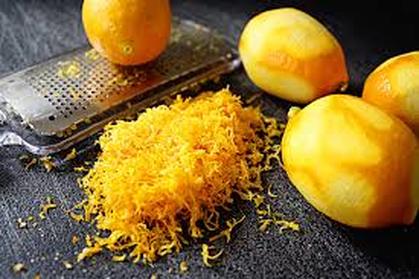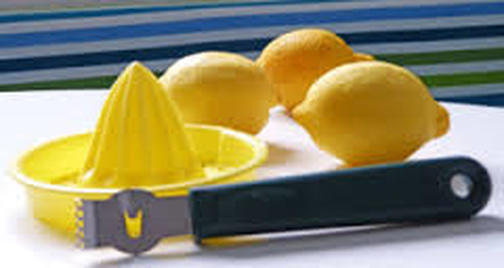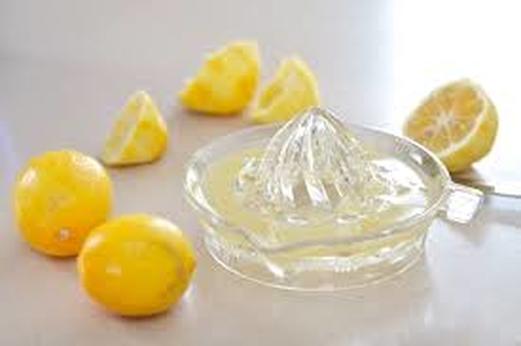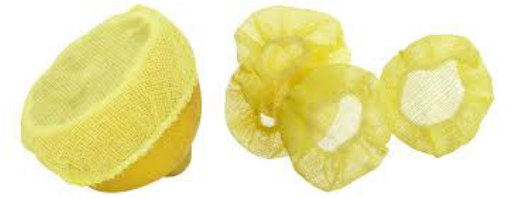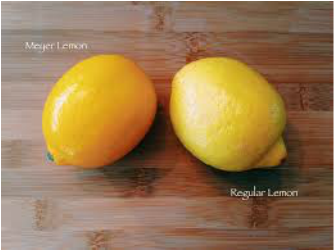Our readers may have noticed that lemon zest and lemon juice appear in a variety of savory recipes, breads and scones as well as all kinds of sweets and beverages. Lemon wedges are also traditionally served with hot tea at every Afternoon Tea gathering. As you prepare your Afternoon Tea menus, you will find yourself zesting and squeezing lemons on a regular basis. We would like to help you get to know Afternoon Tea’s favorite fruit a little more intimately.
First of all, we urge you always to use fresh lemons, not the tempting liquid in the green bottle that requires no cutting our squeezing. Bottled lemon juice contains preservatives and does not taste like fresh juice. Also, many recipes require lemon zest as well as juice, and you will find no lemon zest in a bottle. We recommend keeping a good supply of lemons on hand in the crisper drawer of your refrigerator. Lemons keep well for several days when refrigerated, so one never needs to run out of lemons. You want to be prepared when a recipe calls for lemon zest or lemon juice.
Lemon zest, often also called lemon peel, is the outside yellow portion of the lemon. The white pith directly under the lemon zest is thick and bitter tasting, while the zest has a bright, aromatic favor and scent. Use only the yellow zest when preparing recipes. To “zest” a lemon, simply use a hand tool to scrape off the yellow zest on the outside of the lemon. A Microplane grater will produce very small pieces of lemon zest, while a zesting tool that has small rings at the end of a stainless steel “blade” will create longer strips of zest that will add texture and visual interest to a recipe as well as flavor and scent. Rose and Kathleen keep both tools on hand, depending on the effects they hope to create in individual recipes.
First of all, we urge you always to use fresh lemons, not the tempting liquid in the green bottle that requires no cutting our squeezing. Bottled lemon juice contains preservatives and does not taste like fresh juice. Also, many recipes require lemon zest as well as juice, and you will find no lemon zest in a bottle. We recommend keeping a good supply of lemons on hand in the crisper drawer of your refrigerator. Lemons keep well for several days when refrigerated, so one never needs to run out of lemons. You want to be prepared when a recipe calls for lemon zest or lemon juice.
Lemon zest, often also called lemon peel, is the outside yellow portion of the lemon. The white pith directly under the lemon zest is thick and bitter tasting, while the zest has a bright, aromatic favor and scent. Use only the yellow zest when preparing recipes. To “zest” a lemon, simply use a hand tool to scrape off the yellow zest on the outside of the lemon. A Microplane grater will produce very small pieces of lemon zest, while a zesting tool that has small rings at the end of a stainless steel “blade” will create longer strips of zest that will add texture and visual interest to a recipe as well as flavor and scent. Rose and Kathleen keep both tools on hand, depending on the effects they hope to create in individual recipes.
Lemon juice is produced by cutting a lemon in two through the widest middle section and squeezing one or both halves to release the juice. A variety of hand-held or electric citrus juicers are available and can be used to make lime and orange juice as well as lemon. Although she has used several of these electric juicers, Rose prefers the simple, old fashioned clear glass citrus juicer with no mechanical parts. It will do the job with no fussy cleanup.
Most recipes that call for lemon juice will use liquid measurements such as 1/3 cup, 1 cup, etc. However, some recipes will call for “the juice of three lemons,” or something similar. Both methods can create anxiety for the cook, for it is difficult to determine how many lemons will be needed to produce one cup of lemon juice, and whether three lemons will really produce the desired amount of juice. Even the Fannie Farmer Cookbook, one of our most reliable sources, says, “It’s hard to say how much juice one lemon gives; some lemons are juicier than others; some have thicker skins. The best way to be accurate is to measure the juice.” We agree with Fannie that measuring the juice is the best method, and for that reason we have encouraged you to keep extra lemons on hand, as you may need more than you expected. Having said all that, Fannie admits that one lemon makes about ¼ cup of juice, and we have encountered lemons that produce about 1/3 cup of juice. This is about as accurate as we can be.
We will share a handy little trick that will help you get as much juice as possible from each lemon. Rinse and dry each lemon and microwave it for about 20 seconds before cutting and squeezing it. The lemon will release more juice using this method than a cold lemon straight from the refrigerator.
When serving lemon wedges with hot tea, it is a thoughtful gesture to remove the seeds. First, using a sharp knife, cut the lemon into four wedges from end to end. Then, simply use the tip of the knife to pierce each lemon section’s membrane and gently push the seeds out and discard them. Try to avoid disturbing the shape and appearance of the lemon wedge. Alternatively, the host or hostess can cut the lemons in two and attach little elasticized mesh covers to each lemon half to catch the seeds when the guest squeezes the juice into her teacup. These little lemon covers, which look like tiny shower caps but are called Stretch Wraps, are available at kitchen stores and tea shops.
As you become more familiar with hosting tea parties, you will notice that lemon juice and lemon zest are not just used for beverages, lemon curd and desserts. They are frequent ingredients in savory dishes, especially salad dressings, fish and shellfish, chicken and all sorts of Mediterranean recipes. Lemon juice is also used to help prevent avocados from turning dark after being peeled, and is thus a key ingredient in guacamole. You will also learn that there is more than one kind of lemon. “Regular” lemons, which are available year round, are often referred to as Eureka or Lisbon lemons, though these two strains are not identical. However, both are fairly large with thick, bright yellow skin and a very acidic, clear tangy taste. Another variety, Meyer lemon, is seasonal and available primarily in the winter months. Meyer lemons are smaller than Eureka lemons, more round, and sweeter. The zest of a Meyer lemon has a more complex scent, similar to the bergamot aroma in Earl Grey tea. For tartness and clear lemon flavor, we prefer good old reliable Eureka lemons, but we encourage you to do your own research. To quote Fannie Farmer once again, “Get to know your lemons.”

